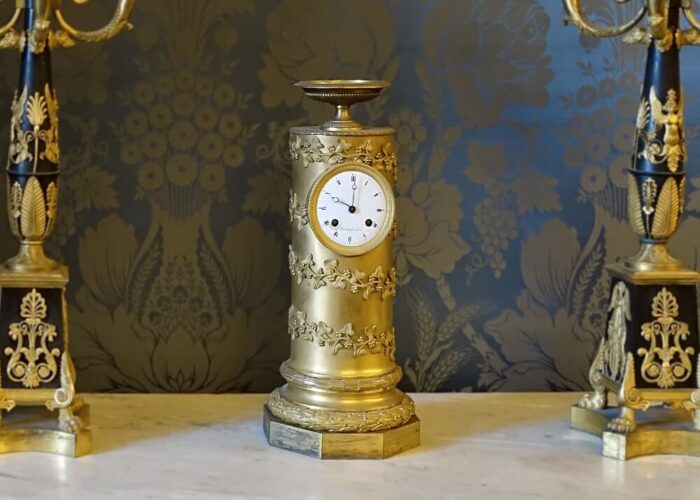Column clock with ivy
Berthoud, the watchmaker of the explorers and maker of this clock with ivy
VISIBLE IN: Bedroom of King Francis II
Description of the clock with ivy
Pendulum clock in the shape of ivy-wrapped semicolon, with a jar on top. Has an octagonal base with laurel wreath.
The structure is made of ormolu gilded bronze , a typically shape of the Empire style (Late Neoclassic). The clock dial has Roman numerals. The whole structure clearly remind to the era of ancient Rome, followed by Napoleon to exalt his powers of leader.
This clock was built in 1818, and because the author of the mechanism died in 1813, the structure was clearly made later.
The artist: Louis Berthoud (1754 – 1813)
Pierre Louis Berthoud (1754-1813) was one of the best watchmakers of the 19th century. When he was 12 years old he became apprentice of his father Pierre (1740-1767), and his exceptional abilities were recognized by his famous uncle, Ferdinand Berthoud (1727-1807) who brought him to Paris. When his uncle died in 1807, Louis inherited his qualification as Clockmaker of the Navy, kept until 1813, the year of his death.
Berthoud was rewarded by the Paris Institute for a decimal stopwatch, and Napoleon Bonaparte awarded him the prize of CHF 10,000 a year, with the condition to teach watchmaking art to five students. He received further awards, and his mechanisms were used by Baron von Humboldt (1769-1859), the first naturalist in history, for his explorations of the Amazon and South America. After his death, his grandchildren Louis and Charles August succeeded him, and later became the Clockmaker of the Navy.
External links
